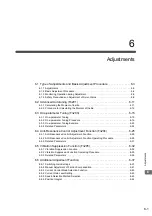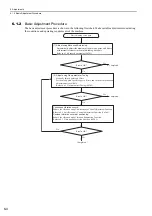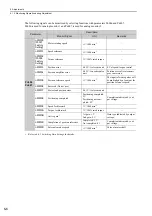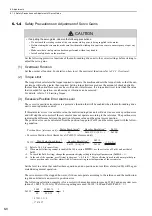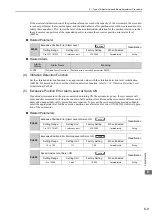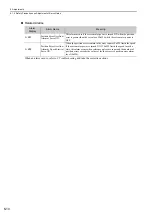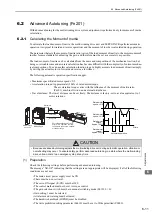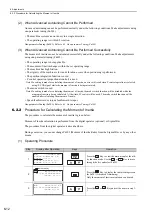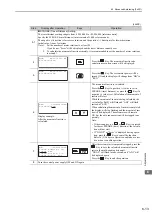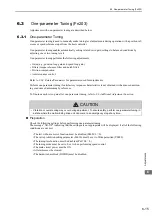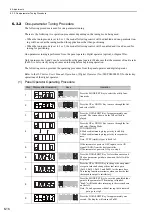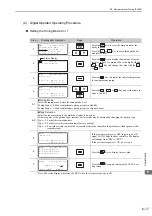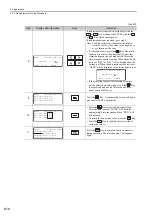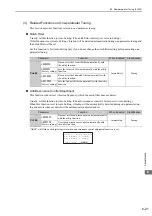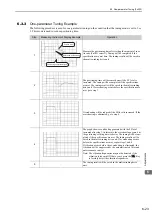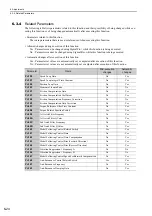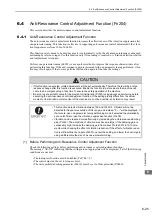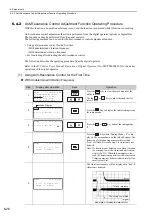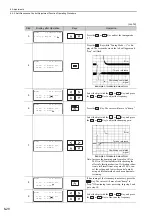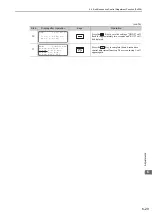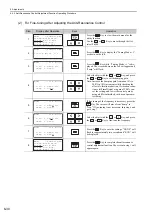
6.3 One-parameter Tuning (Fn203)
6-15
6
Adjustments
6.3
One-parameter Tuning (Fn203)
Adjustments with one-parameter tuning are described below.
6.3.1
One-parameter Tuning
One-parameter tuning is used to manually make tuning level adjustments during operation with a position ref-
erence or speed reference input from the host controller.
One-parameter tuning enables automatically setting related servo gain settings to balanced conditions by
adjusting one or two tuning levels.
One-parameter tuning performs the following adjustments.
• Gains (e.g., position loop gain and speed loop gain)
• Filters (torque reference filter and notch filter)
• Friction compensation
• Anti-resonance control
Refer to
6.3.4 Related Parameters
for parameters used for adjustments.
Perform one-parameter tuning if satisfactory response characteristics is not obtained with advanced autotun-
ing or advanced autotuning by reference.
To fine-tune each servo gain after one-parameter tuning, refer to
6.6 Additional Adjustment Function
.
Preparation
Check the following settings before performing one-parameter tuning.
The message “NO-OP” indicating that the settings are not appropriate will be displayed, if all of the following
conditions are not met.
• The test without a motor function must be disabled (Pn00C.0 = 0).
• The write prohibited setting parameter (Fn010) must be set to Write permitted (P.0000).
• The tuning-less function must be disabled (Pn170.0 = 0).
• The tuning mode must be set to 0 or 1 when performing speed control.
• The main circuit power must be ON.
• All alarms must be cleared.
• The hardwire baseblock (HWBB) must be disabled.
CAUTION
• Vibration or overshooting may occur during adjustment. To ensure safety, perform one-parameter tuning in
a state where the multi-winding drive unit can come to an emergency stop at any time.

